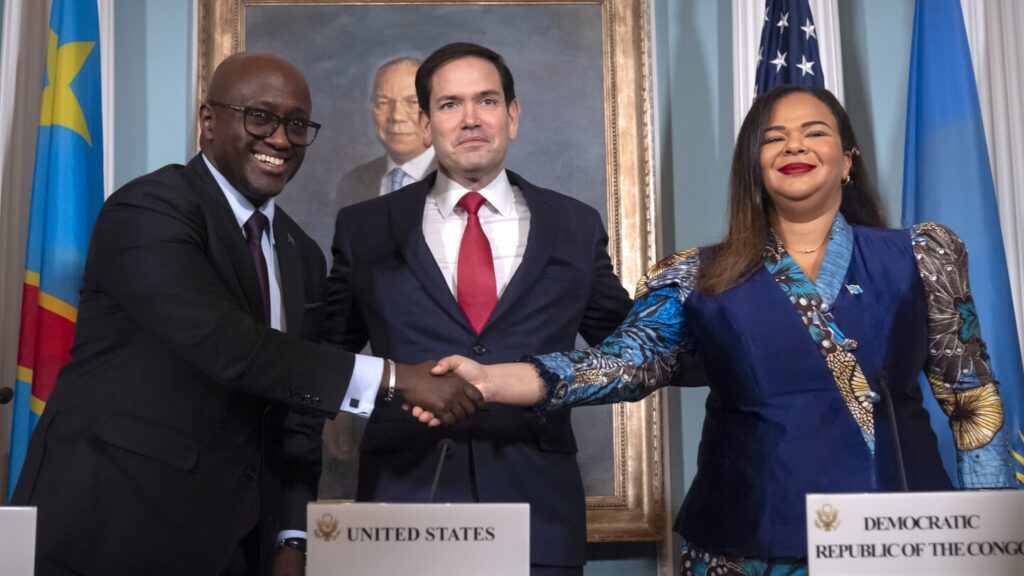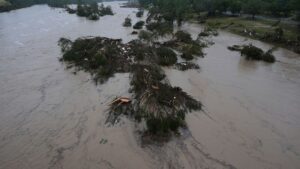
WASHINGTON – In a significant diplomatic breakthrough, the Democratic Republic of Congo and Rwanda have signed a peace agreement facilitated by the United States. The deal aims to end decades of deadly conflict in eastern Congo, while providing U.S. companies access to critical minerals in the region.
Immediate Impact
The peace deal was signed on Friday at the State Department’s Treaty Room, under the watchful eye of a portrait of Colin Powell, the first African American U.S. Secretary of State. President Donald Trump, addressing the foreign ministers of both countries at a White House meeting, declared, “Today, the violence and destruction comes to an end, and the entire region begins a new chapter of hope and opportunity, harmony, prosperity and peace.”
Key Details Emerge
Secretary of State Marco Rubio hailed the agreement as “an important moment after 30 years of war.” The conflict in Congo, involving more than 100 armed groups, has resulted in millions of deaths since the 1990s. While the agreement marks a turning point, analysts caution that it may not immediately end the fighting, as the most prominent armed group claims the deal does not apply to them.
“Some wounds will heal, but they will never fully disappear,” said Congo’s Foreign Minister Therese Kayikwamba Wagner.
Industry Response
The peace agreement is seen by some as an opportunity for the U.S. to gain access to minerals essential for global technology, amidst a competitive race with China for influence in Africa. Trump has emphasized the importance of these minerals, which are crucial for various technologies.
By the Numbers
With an estimated 7 million people displaced, the United Nations describes the situation in Congo as “one of the most protracted, complex, serious humanitarian crises on Earth.”
What Comes Next
While the deal includes provisions on territorial integrity and the disarmament of non-state armed groups, the Rwanda-backed M23 rebel group remains a significant challenge. The U.N. has noted the group’s recent advances, and their spokesperson has indicated the agreement may not bind them.
Background Context
The conflict in eastern Congo traces back to the aftermath of the 1994 Rwandan genocide, which led to mass migrations and ongoing tensions. Rwandan authorities have accused fleeing Hutus of participating in the genocide and have alleged Congolese support for these groups.
Expert Analysis
Christian Moleka, a political scientist at the Congolese think tank Dypol, described the deal as a “major turning point” but warned that it fails to address war crimes and justice for victims. “This seems like a trigger-happy proposition and cannot establish lasting peace without justice and reparation,” he stated.
Regional Implications
Hope Muhinuka, an activist from North Kivu, expressed skepticism about the U.S.’s role, emphasizing the need for local initiative to capitalize on the peace deal. The region, hardest hit by the conflict, holds cautious optimism for the agreement’s potential to reduce violence.
The U.S. Department of Commerce estimates the value of Congo’s untapped minerals at up to $24 trillion.
Timeline of Events
- 1994: Rwandan genocide leads to mass migrations into Congo.
- 1990s-Present: Ongoing conflict in eastern Congo kills millions.
- 2023: U.S.-mediated peace deal signed by Congo and Rwanda.
As the peace agreement is implemented, the international community watches closely, with hopes that it will pave the way for lasting peace and stability in the region.




